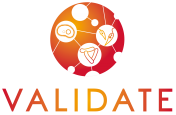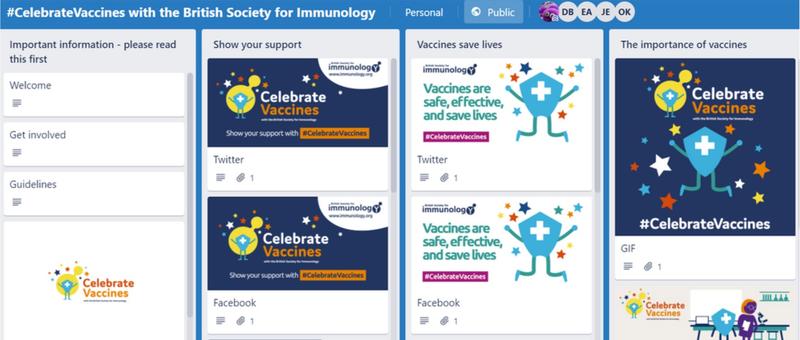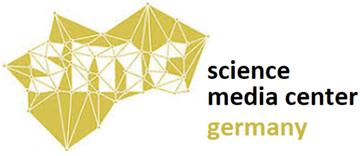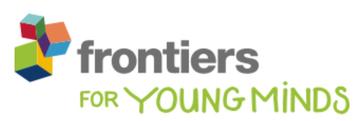Outreach Guide
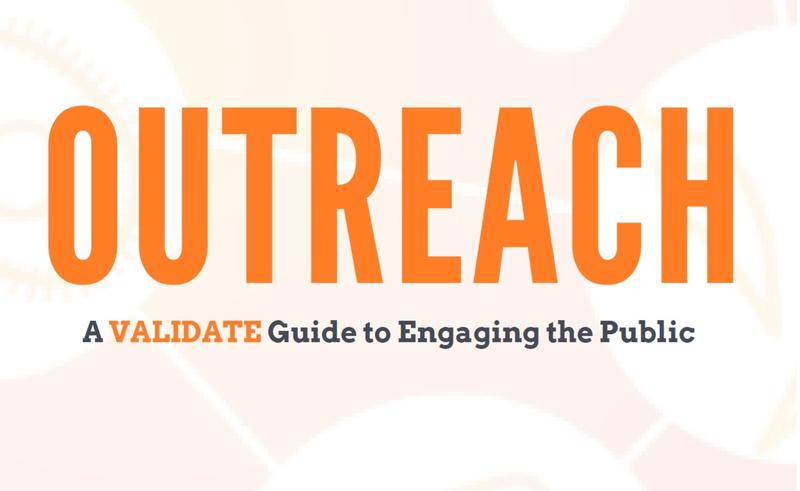
The VALIDATE Outreach Guide is written by VALIDATE members and some of our external partners and contains case studies, advice and resources that will help you engage the public with your important research.
You can also download this guide as a PDF for printing.
Contribute to the Outreach Guide
We hope that the Guide will become a living document that will expand as members add their own case studies and advice. We are especially keen to receive contributions from members who have:
- engaged the print, broadcast and social media in Lower and Middle-Income Countries (LMICs)
- undertaken recruitment for clinical trials, especially in LMICs
- have taken part in an outreach project in Asia or South America
If you wish to contribute to the guide, just drop us an email at VALIDATE@ndm.ox.ac.uk.
Case Studies
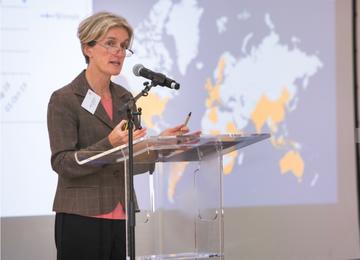
Prof Helen McShane is the VALIDATE Network Director; Director of the Oxford NIHR Biomedical Research Centre; Professor of Vaccinology at Oxford University; Deputy Head (Translation and Personnel), Medical Sciences Division; and an Honorary Consultant Physician in infectious diseases. Since 2001, Helen has led a TB vaccine research group at the University of Oxford.
Science outreach, or public engagement, is an area of growing importance in any researcher's skills portfolio. From television interviews to using social media, giving talks at schools, lobbying politicians, to chatting to local community members about their views, the possibilities to interact with the public and increase their awareness of our science are endless. Outreach activities can educate and inform the general populous, giving them crucial insight into the importance of scientific research (and the use of their taxes to pay for it). Particularly in our research field, I believe we have a social responsibility to counteract the growing voices and power of the anti-vaccine community, by discussing the nuanced value of vaccines and how they are developed to be safe and efficacious and to address concerns and questions in an open forum. It is also important that we show school children and young people that scientific research is a wonderful career choice open to all regardless of gender, nationality, or socioeconomic status. These school children and young people are the next generation of scientists who will make important discoveries and add value to our countries’ economies, and your enthusiasm and excitement – and depth of expert knowledge – about your research area will inspire them to do so.
Outreach has benefits for scientists too. Clinical trial recruitment is quicker and less fraught with difficulties and dramas when the local community are informed and updated. In Citizen Science projects, non-scientists help analyse huge data portfolios that would be impossible for a small research team to tackle. Performing outreach can challenge and improve your communication skills, and you can secure outreach-specific grants, improving your CV. Many funding bodies now expect their awardees to disseminate their research to the general public, and it is important for your grant application’s success to demonstrate outreach plans. Finally, outreach can actually be enjoyable! Being interviewed for radio is an interesting new challenge, and I find it fascinating to be challenged by children’s questions, some very insightful and some out of left field, and to see their increasing excitement as the world of science opens up to them.
Among our 400 VALIDATE members, we have some fantastic examples of innovative and interesting outreach programs. This document pulls together some of these examples as case studies, along with their tips and advice on how to perform outreach successfully. We hope that these stories will support our members not yet performing outreach in getting started, and inspire members already doing so with new ideas and potential improvements. Our aim is to inspire all our members to get out in the public domain and talk about your science, particularly during our upcoming ‘Outreach Week’ on 7-11 December 2020. We hope you will join in, and look forward to hearing your outreach stories!
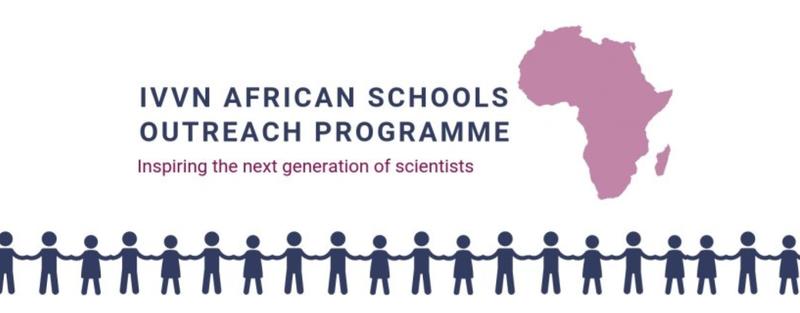
By Dr Carly Hamilton

Dr Carly Hamilton is the International Veterinary Vaccinology Network (IVVN) Manager. Previously, Carly worked as a post doc where she developed in vitro bovine intestinal organioids to study interactions between enteric pathogens and the bovine intestine.
Carly left the lab behind in July 2017 to take up her role as the IVVN Network Manager, which she thoroughly enjoys.

Data Collected by the International Food Policy Research Institute (IFPRI) highlight the low representation of women in agricultural research in Africa. On average only 24% of researchers on the continent are women. As part of the International Veterinary Vaccinology Network’s (IVVN) efforts to address this challenge, the IVVN in collaboration with Easter Bush Science Outreach Centre (EBSOC), African Women in Agricultural Research and Development (AWARD), African Vaccinology Network (AfVANET), and various research organisations across Africa, established the African Schools Outreach Programme.
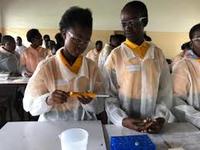
After receiving funding from the University of Edinburgh’s allocation of Global Challenges Research Fund, the programme launched on International Women’s Day 2019. The aim was to coordinate the development and implementation of an African Schools Outreach Programme, initially in Kenya, Nigeria and Zambia.
The purpose of the initiative is to provide women working in veterinary vaccinology in African research organisations with training and resources (in the form of a mobile laboratory in a suitcase) that will enable them to visit schools in their local area, and host experimental workshops to inspire the next generation of scientists in Africa. The experimental workshop was designed by Dr Nicola Stock and Jayne Quoiani of EBSOC, The Roslin Institute, University of Edinburgh.
The workshop is aimed at secondary school students and gives students hands-on experience of scientific techniques and teaches the importance of vaccinating animals against rabies, and many other devastating diseases that affect livestock and the livelihoods of farmers in Africa and worldwide.
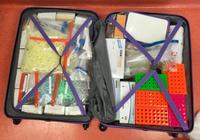
Laboratory in a suitcase
After designing the workshop content, the project team developed a mobile laboratory in a suitcase, which contains plastic ware, reagents and personal protective equipment (safety goggles and lab coats) to deliver the workshop to 40 students.
In March 2019, the project team met at the International Livestock Research Institute in Nairobi, Kenya where six IVVN members from International Livestock Research Institute (ILRI) , the University of Zambia, the University of Ibadan and the University of Buea received training on how to deliver the schools outreach workshop. After a two-day training session, the trained scientists piloted the workshop at a schools in Nairobi. The pilot was a success – the scientists practised their new engagement skills and students learned how to use a micropipette and performed their own experiments to determine the percentage of dogs that had received a rabies vaccine. Students also had the opportunity to interact with the scientists hosting the workshop during a “meet the scientist” session, and ask questions about their career path and their motivations for becoming a veterinary vaccinologist.
Since the training session in March 2019, the programme has been implemented in six schools across Kenya, Nigeria and Zambia, reaching a total of 223 students. Students completed a questionnaire after the workshop and feedback has been excellent, with students at the workshop saying it has inspired them to study science in the future, and highlighted that women can be scientists and the importance of vaccines to protect.
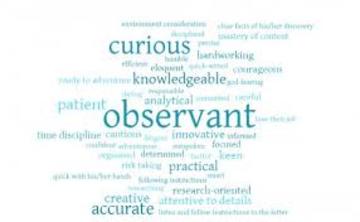
After the workshop, AWARD hosted a mentoring session, which included presentations from outstanding women veterinary vaccine scientists. AWARD has in-country chapters in Kenya, Nigeria and Zambia (and other African countries that the IVVN plan to work in), therefore fellows of each in-country chapters are mobilised to the schools to run mentoring activities in conjunction with the experimental workshop.
Challenges faced by the project include distributing mobile laboratories to the different partner countries involved in the project and ensuring the correct documentation is in place for the suitcases to clear customs. The project has also been put on hold during the COVID-19 pandemic.
Overall, the programme has been very successful and we look forward to expanding the programme to more schools in the future.
Find out More
by Kelvin Vollenhoven & Dannielle Moore

Kelvin Vollenhoven is the Communications, Marketing and Community Engagement Manager at the South African Tuberculosis Vaccine Initiative (SATVI) at the University of Cape Town (UCT). He is also a TB Advocate of the Stop TB Partnership and transition committee member of the South African Health Technologies Advocacy Coalition (SAHTAC).

Dannielle Moore is the Communications and Marketing Officer within the Division of Molecular Biology and Human Genetics (MBHG) at Stellenbosch University. Dannielle is responsible for the management of all science communication and community engagement activities of the division and works to inform and educate the public to recognize tuberculosis (TB) symptoms to improve health care.
The “TB Under the Spotlight” community engagement initiative is a collaborative travelling science exhibition conceptualised by scientists from the Division of Molecular Biology and Human Genetics (MBHG) at Stellenbosch University, in partnership with the South African Tuberculosis Vaccine Initiative (SATVI) at University of Cape Town (UCT), UCT Department of Anthropology and the Western Cape Departments of Education and Health. Other partners in the initiative include the South African Medical Research Council (SAMRC) Centre for Tuberculosis Research and the Department of Science and Innovation/National Research Foundation Centre of Excellence for Biomedical TB Research.
In 2015, the World Health Organization developed the End TB Strategy, outlining several goals necessary for the effective control of TB including increased efforts to demystify TB and improve the public's knowledge, attitude and perception towards the disease. This travelling exhibition provides a platform for scientists to engage with the public to create TB awareness and promote their research efforts, thereby bridging the divide between science and society and increasing trust and support in research.
Enthusing the next generation of scientists: This initiative aimed to inform and educate learners in high TB burden areas about the disease to improve health-promoting practices through increased awareness and destigmatization and to encourage young learners to pursue a career in science.
This project engaged school learners through interactive exhibitions each focusing on a different aspect of TB, namely signs and symptoms, diagnostics, treatment and TB research. Prior to exhibition engagement learners attended an introductory session where a brief introduction to TB with regards to what causes TB and how it is spread were discussed.
Learners spent 15 minutes at each station, during which MBHG scientists gave a brief explanation of the station topic, followed by a question and answer session and participation in various tailor-made activities.
These included:
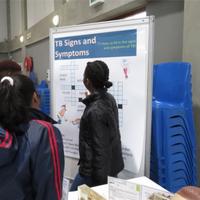
Signs and Symptoms:
A display of preserved TB diseased tissue samples, a modified skeleton prop with electronics and mechanisms to visually mimic the signs and symptoms of the disease.
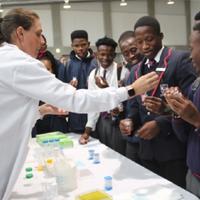
Diagnosis:
A short video clip developed by scientists within the MBHG division explaining the process of sample collection for TB diagnosis as well as a series of posters displaying different methods of TB testing and tissue pathology of humans and animals with TB to highlight the occurrence of zoonotic disease.
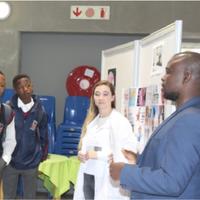
Treatment:
A short video clip developed by scientists within the MBHG division explaining the importance of treatment adherence, medicine props to highlight the amount of medication required daily for the treatment of TB and an interactive quiz focusing on the importance of treatment and disease outcome.
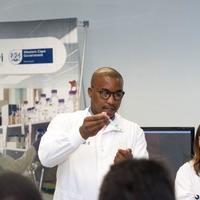
TB Research:
A mock lab set-up to make learners feel as though they were walking into a research institute, a skeleton dressed in full personal protective equipment (PPE) to demonstrate the safety measure taken by scientists.
These activities demonstrated how a mix of innovation and creative communication methods can showcase the work of scientists and foster a space in which this work is brought ‘out of the laboratory’ and into the realm of the public.
Evaluation
Programme effectiveness was evaluated by means of a pre- and post- test with a select group of learners from each engagement group. The results indicated knowledge uptake by the learners following engagement with our staff and students. Additionally, feedback sessions with exhibition volunteers were used to identify challenges and solutions experienced throughout the process to improve engagement strategies and programme impact. To date, this collaboration has reached 893 school learners in 17 schools within the Cape Winelands district in 2018 and a further 300 learners in the Heidelberg area during 2019.
Lessons learnt
The logistics of uprooting scientists, their equipment, organising special permits for the transport of specimens, preparing and setting up the displays, the vast distances covered to target communities and the co-ordination to get learners to the venues are some of the challenges our team have faced since the launch of the programme. Additionally, the lack of incentive for scientists to participate in community outreach activities presents a unique challenge, especially for community outreach projects that are similarly volunteer-based. As a result, the same group of researchers are called-on to host the exhibition on repeat occasions which is both time-consuming, physically draining and impacts their willingness to assist in future projects.
Furthermore, community-based programmes such as this travelling science exhibition are subject to socio-economic instability such as transport strikes, which impact on learning environments and therefore programme success. To minimise these risks and mitigate some of the challenges faced, purposeful selection of school-based venues to reduce travelling needs of learners as well as associated costs are vital. Utilization of school resources also increases access of the initiative to more learners, however it may enhance equipment needs in rural settings where infrastructure is limited. This community-centred planning led to increasing requests from local headmasters that the programme be brought to their schools underscoring the need and desire of the community for this unique science outreach project.
The most important step to overcoming these challenges was designation of group leaders for each of the exhibition stations to evenly spread responsibility across the research team, open communication between the research co-ordinators and logistics team and most importantly institutional collaboration to ensure seamless integration within targeted communities.
The engagement involved an organising team from Stellenbosch, SATVI-UCT and the Department of Education, however when in operation the program involved more than thirty-eight people, fourteen of whom were scientists and about twenty-four non-scientists playing various logistical support roles.
Find out more:
by Emilie Karafillakis

Emilie Karafillakis is a researcher at the Vaccine Confidence Project based at the London School of Hygiene & Tropical Medicine. Emilie has a background in public health, infectious disease control, health systems and policies. Emilie also leads European research on understanding the reasons behind low vaccine confidence on the continent.
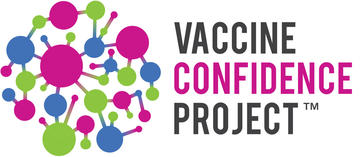
Despite the historic success of immunisation in reducing the burden of childhood illness and mortality, episodes of public concerns and rumours around vaccines have occurred around the world, spreading quickly and sometimes seriously eroding public confidence in vaccination. However, aside from monitoring of adverse events following immunisation, there was neither a systematic monitoring of public vaccine concerns nor a tool to assess risks of programme disruptions, vaccine refusals and disease outbreaks. The Vaccine Confidence Project (VCP), based at the London School of Hygiene & Tropical Medicine, was founded in 2010 to address these unmet needs and establish a systematic approach to monitoring public confidence in vaccines through population-based surveys, ongoing media-surveillance, in-depth analyses of vaccine confidence issues and mapping of the global spread of vaccine sentiment.
In 10 years of research at the VCP, we have found that most individuals vaccinate and have high confidence in vaccination. However, there are pockets of populations that feel hesitant or lose confidence in vaccination, which can be concealed by national statistics and can quickly transform into larger communities with shared beliefs and concerns about vaccines. If vaccine coverage decreases in these communities, the risk of disease outbreaks becomes significant, as was seen with the measles outbreaks of the 2010s in Europe and across the world. This highlights the importance of understanding why individuals or groups may lose confidence in vaccination as well as detecting where drops in confidence happen before they are reflected in coverage rates.
The VCP therefore developed a Vaccine Confidence Index (VCI) as a tool for mapping confidence globally. The VCI is a measure based on a select number of factors identified from extensive analysis of areas of both low and high vaccine coverage. The VCI has allowed us to identify countries, communities or pockets of populations with decreasing confidence in vaccination. For example, multiple rounds of surveys conducted in the Philippines allowed us to identify large drops in confidence in vaccination following an incident around dengue vaccine safety. Understanding how and when confidence changes is crucial to detect early signals of public distrust, intervene to pre-empt potential programme disruptions, and to provide risk analysis and guidance to engage the public early.
One of the important challenges facing health authorities is the current communication environment. Continuous advancements in communication technologies such as social media have contributed to the rise and rapid spread of concerns about vaccine safety as well as a myriad of conspiracy theories reflecting distrust in the motives of those producing, providing and making policies around vaccines. Existing communication technologies allow scientific information as well as rumours, misinformation and beliefs about vaccination to spread rapidly across the world, influencing individuals and groups online as they seek information to make vaccination decisions. A number of studies have reviewed websites and social media for information on vaccination and have found that it is of variable quality, with a predominance of negative or incorrect content that influence perceptions about risks and benefits of vaccines. However, social media as a health communication platform also has a wide range of potential benefits. These include increased interactions with others; enhanced availability, accessibility, and customisation of information; monitoring, measuring and individual and policy advocacy opportunities. Public health communities have been slow and inconsistent to proactively engage with and invest in social media for monitoring opinion, communicating evidence-based information and/or countering misinformation. In the absence of a savvy, strong and sustained public health presence, pseudoscience, confusing media and public rumour have fuelled strong anti-vaccine sentiment and influenced vaccination decision-making.
Research has shown that if we are to rebuild trust in vaccination, listening to and engaging the public should be a key component of communication strategies. Individuals are not only losing trust in vaccination but in the scientific method as well. We therefore need to ensure that they are included and engaged with in research as early as possible. Positive examples of engaging the public in vaccine trials as well as in decision-making around vaccine introductions have started to emerge, taking the form of public consultations or more proactive engagement of individuals in research. Engagement should also focus on the future parents of tomorrow, starting with children and education about science, health and vaccination. Ensuring that public opinions are respected and understood rather than attacked or judged is also essential. Listening activities, whether through traditional surveys and interviews or through real-time social media monitoring are crucial to understand possible public concerns around vaccination as well as information gaps and areas of distrust. While social media listening and communication can be challenging and time-consuming, they are pre-requisites to successful communication strategies.
VALIDATE members have access to a special VCP online portal to help you with social media monitoring for your research. The portal contains guidance and resources, a forum for questions, and notifications of rumours and misinformation detected around vaccine trials.
Find out more:

Erika Aquino is the Public Engagement Manager at the British Society for Immunology (BSI). Erika leads on the BSI's public engagement strategy to spark interest in and strengthen understanding of immunology. Erika is responsible for the development and execution of all public engagement activities, supporting BSI members’ involvement in this area, as well developing and implementing materials and resources aimed at a wide range of audiences.
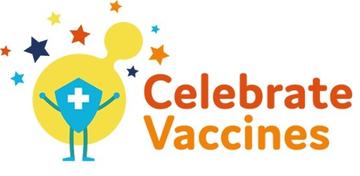
The British Society for Immunology (BSI) has recently focused on advocating the importance of vaccination and vaccine research. To celebrate the successes of vaccine research a virtual mass public engagement day was held on Thursday 26 March 2020. Celebrate Vaccines is the BSI's campaign to champion the critical role of vaccination and vaccine research in saving lives and advancing global health. The aim of the initiative is to strengthen public understanding of the importance of vaccination and help everyone make informed decisions about vaccinations and their children’s health.
The BSI joined forces with several partners to carry out vaccine advocacy in the run-up to the Gavi Replenishment Conference on 4 June 2020, hosted by the UK Government. Gavi, the Vaccine Alliance, aims to help low-income countries protect children from preventable infectious diseases through supporting routine immunisation programmes. The Replenishment Conference gathered world leaders as they announced their country’s contribution to Gavi’s next strategic cycle. Gavi received $8.8 billion in contributions which surpassed their goal and will protect the next generation through vaccination.
The crucial role that vaccines play in protecting our health and keeping our world safe came into sharp focus with emergence of a new Coronavirus. Through appreciating the power of vaccines in saving lives, the Celebrate Vaccines campaign engaged and informed the narrative about how vaccines work and why they are important for improving global public health.
A large element of the Celebrate Vaccines campaign was a mass public engagement day on Thursday 26 March 2020. This was an opportunity for BSI members to inspire the public directly and share their passion for vaccine immunology research successes. Unfortunately, due to the ongoing situation with COVID-19, the face-to-face events were postponed, and effort were focused on running a virtual public engagement campaign to spearhead the vaccination conversation across digital platforms. A social media toolkit was produced with a range of different graphics and assets to facilitate engagement with the campaign.
This was the first time that the BSI had attempted a large-scale social media campaign and it was an enormous success. The Celebrate Vaccines campaign trended on Twitter with over 1,800 posts using #CelebrateVaccines and there was a surge of followers. LinkedIn, Facebook and Instagram also received extremely positive engagement.
As well as BSI members and the wider immunology community, organisations and individuals working in the sector got involved on social media to like, share, post and tweet important vaccine messaging. Some highlights can be seen on the BSI website. Check out the informative articles, engaging infographics, educational animations and supportive posts.
Public engagement resources
A range of digital educational and engaging resources for all to use and share were created for the campaign and can be found on a brand-new section of the BSI website. The resources aim to increase public knowledge about vaccines and enable researchers and doctors to speak up about the importance of vaccinations.
Three short animations covering different aspects of vaccinations were developed – the global impact of vaccines, how vaccines work and how they are made.
These are an easy-to-understand resource for sharing widely to support teaching and engagement in a fun and visual way. They can be found on the website and the BSI YouTube channel.
The popular BSI ‘A guide to childhood vaccinations’ was updated and uploaded online so it’s easier to access and navigate. The guide explains how vaccines work and how they effectively protect us from diseases and provides updated information on the current vaccination schedule for children in the UK. New infographics were designed based on information and graphics from the guide. Topics covered are ‘How do vaccines work?’, ‘What is herd immunity?’ and ‘How effective is vaccination?’. These can be downloaded from the website for free, for use online and in print to explain vaccine concepts and to enhance face-to-face public engagement events.
Activity packs were developed to facilitate public engagement about vaccines and contain a range of materials and resources needed to deliver interactive, hands-on activities and classroom workshops. The activity packs are free for the public to access and try their hand at exploring how the immune system fights viruses and bacteria, how vaccines take advantage of those natural functions, the concept of immunological memory and the importance of herd immunity. Packs contain facilitator how-to guides and instructions, including lists of materials needed, although most items people may already have at home. Everyone is welcome to use them at events in the future.
The BSI will continue the Celebrate Vaccines campaign, showcasing new activities and resources and continuing to post on social media to promote the campaign and encourage others to join our movement.
Find out more:
The Celebrate Vaccine animations
with Prof Tom Solomon

Professor Tom Solomon is a Chair of VALIDATE's Scientific Advisory Board, Director of the National Institute for Health Research Health Protection Research Unit in Emerging and Zoonotic Infections and Professor of Neurology at the Walton Centre NHS Foundation Trust.
Tom's engagement work includes a highly acclaimed TEDx talk, many radio and television appearances, a Guinness World Record for creating the “World’s Biggest Brain”, and another for running the fastest marathon dressed as a doctor
VALIDATE asked Tom about his experience of working with the media.
How did you first get involved with engaging the media?
I spent the first half of my career keeping away from the media because, as a medical student, you’re taught that journalists, like lawyers, are best avoided. I’ve learnt over the years that’s not the case. My first major media exploit was with the Encephalitis Society. We’d been working on the public engagement side for some time, in other words talking to patients and the public trying to find out what they found important and getting their help to guide the research, when they had somebody who was running the London marathon drop out. They asked me to do it last minute (in fact, they didn't ask me, they told me and before I knew it I discovered I had been registered by email).
I was on a plane that had just landed in South Africa and panicked and started training in the airport. My wife videoed me on her phone and we eventually made a stupid video called “The Running Mad Professor” which got 21,000 views and helped raise about £21,000. I also won a Guinness world record for the fastest marathon dressed as a doctor!
Since then I have given a Ted Talk which I called "Sex, drugs & emerging viruses". I have written a kid's book and toured with a stage show called Roald Dahl's Marvellous Medicine, which used the author's books to get kids excited about medicine. I also did a significant amount of media through my work with the Ebola outbreak and have been rather busy recently with the COVID-19 pandemic.
Why is media engagement so important, especially for vaccine researchers?
Since I embarked on my media engagement work as “The Running Mad Professor”, I’ve realized that it is only by engaging with the public that you can understand what research questions they feel are important, and also explain to them about the work you are doing. Many of us are funded by the taxpayer; they are our customers and if you can’t explain what you are doing and why you are doing it in simple terms then you are not really doing a good customer service job.
As for vaccines, whether we like it or not, vaccines are controversial and there are many who are anxious about them. We can’t hide away from this. It is important that we, as scientists, make people understand our approach and why it is important.
What are some of the challenges you have faced doing TV and newspaper interviews?
One of the challenges with live TV is when interviewers throw something at you that you are not expecting. I have been doing quite a few live interviews about COVID-19 recently, which is a constantly evolving story. I am often invited to speak about subject X… but at the last second you find out they are going to ask you about Y or they hit you with a breaking news story 10 seconds before you go on air. I have found it helpful to have my iPad to hand with the BBC News (or another news site) ready and loaded, so I can keep an eye on any breaking news stories, as they happen, then I at least have a short time to think about how I am going to respond. Whilst it may be fine to respond with "I don't know", it is always better to be able to provide an informed response, so even a 10-second head start can help.
I have had varied experience with the print media. The Guardian once did a very nice profile on me about my work on Ebola but with a headline that said “Meet the man leading Britain's fight against Ebola”, which I found rather embarrassing given I was only running part of the response alongside a number of equally important colleagues. Though they are more widely read, I find working with some of the UK Tabloid “Red Tops” frustrating. I wrote a quick 300-word piece on COVID-19 for the Daily Express, and they put “Prof Tim Solomon” at the top! I think that if you are going to work with the media you have to accept things like this will happen.
How do you go about developing relationships with journalists?
I think the most important thing is to know the business and understand exactly what journalists need - which is, in most cases, a talking head for TV or a quote for a newspaper. If you receive a request, respond as quickly as possible as their work is time-sensitive, and journalists appreciate a quick reply. A very important tip I have learned is that if you receive a call inviting you to come on the air or for an interview, even if you are passionate or knowledgeable about the topic don’t launch in straight away. Let them know you want to help, make an excuse and say you will have to get back to them in five minutes. This gives you some time, even if it is just a few minutes, to gather your thoughts and think about what you are going to say before you are live.
You don’t need to be too paranoid about talking to journalists. They gain nothing from screwing up your career and so, in general, you should feel comfortable talking with them off and on the record. If you said something and it didn’t come out how you mean, just ask to say it again!
On some of the media courses, they teach you to respond to journalists like an evasive politician, but I don't think we scientists should be politicians; I think we should feel comfortable responding to questions in a straightforward way. For a loaded question such as "Do you think the pandemic is going to get worse?" I have found myself attempting to first put the question into its proper context before directly answering, but my brother, who is my biggest critic, often tells me to "answer the f***ing question"! This is good advice. A better approach is to answer the question directly first and then provide the context - "Yes I think it will likely get worse and here's why...".
What do you know now that you wish you'd known before you began your media work?
I think the main thing to know is that working in the media is a safe, fun sport and you don't need to be frightened. You have to accept that sometimes they will get your name wrong, misquote you, or use a headline that is a bit embarrassing - if you can't accept these occasional problems you probably shouldn't be doing it. Before an interview, you think about the three key messages you want to get across to the audience, and how to explain your thinking in simple English. Media organisations, like the BBC, are there to entertain, as well as inform and educate. You are not there to list off tedious facts or numbers (that won’t cut it); if you bore people silly, they will have learnt nothing from you. Finally, engaging the media is fun and I would highly recommend that VALIDATE members, especially those early in their career, get out there!
Find out more:
Resources

Dr Rachel Tanner is a member of the VALIDATE Network Management Board and a Research Fellow at the Jenner Institute, University of Oxford. Rachel's research focus is on immune correlates and the host immune response to TB vaccination.
Rachel has put together a list of online resources that will help with your outreach work.
Based in the UK and Germany, The Science Media Centres see their mission as supporting and guiding science journalists in identifying scientific experts for interviews on breaking news and on dramatic science-related events that need to be evaluated immediately. They also offer to identify experts to contribute to background stories and help organisations deliver expert statements, fact sheets and press briefings.
Who can get involved?
English and German-speaking VALIDATE members should consider registering on the centres’ expert databases and you may become part of the next national news story that requires input from your field.
How can I get involved?
Visit the website and register as an expert:
The Science Media Centre UK: www.sciencemediacentre.org
The Science Media Centre Germany: www.sciencemediacenter.de
Part of the ‘Frontiers’ journal group, Frontiers for Young Minds is an open-access scientific journal for children and adolescents.
It aims to make cutting-edge science available to younger audiences by providing a collection of scientific articles by scientists in accessible language. It is up to children themselves (with the help of a scientist mentor) to provide ‘peer review’ and feedback to authors on how best to improve their articles. Frontiers for Young Minds was recognised as one of the American Library Association’s ‘Great Websites for Kids’ in 2014.
Who can get involved?
Everyone! This is available to scientists worldwide and it is free to submit and publish articles.
How can I get involved?
Visit kids.frontiersin.org where you can write up your own research in a language suitable for children (you are free to select your target age group), and submit for illustrated publication. You can also sign up to be a Science Mentor to help children understand the scientific process, peer review, and provide critical feedback.
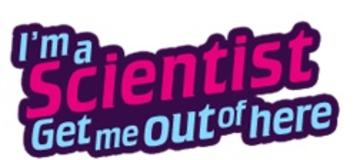
‘I’m a Scientist, get me out of here!’ and its COVID-19 equivalent ‘I’m a Scientist, stay at home!’ is an online student-led STEM enrichment activity that connects school students with scientists through real-time text-based chats.
There are several ‘zones’ to group together scientists working in a particular area (e.g.‘disease detectives’), and schools can book chat slots where students have 40 minutes to ask anything they like. There is also a ‘forum’ style area for Q&A outside of the live chats. Students vote for their top scientists each week and there is an overall winner for each zone.
Who can get involved?
At the moment, I’m a Scientist is focussed in the UK and Ireland, but is working on expanding into other European countries, is currently running an event in Malaysia, and will run a pilot in Kenya in autumn, so watch this space!
How can I get involved?
Visit imascientist.org.uk for up-to-date information on events and how to apply. One great aspect is that the amount of time you devote is entirely up to you – you can take part in a single chat, or log on multiple times a day!

The mission of 500 Women Scientists is to make science more open, inclusive, and accessible; they aim to transform leadership, diversity and public engagement in science.
Who can get involved?
Everyone who identifies as a woman in STEM or a supporter of women in STEM.
How can I get involved?
Visit 500womenscientists.org You can join one of the ‘local pods’ which meet regularly to develop a support network, make strategic plans and take action on issues that resonate in your community. You can also join up to ‘Request a woman in TEMM’, which is a resource for journalists, educators, policymakers and anyone else looking for scientific expertise.
It aims to increase women’s voices in the public sphere as media interviews, boards, conference panels and articles are often disproportionately filled with male voices. There are many other opportunities to get involved including Wikipedia edit-a-thons to address sexism on the internet, ways to take action for Black Lives Matter and Reproductive Justice and to support mothers in the scientific workplace.
A community that aims to empower women in science, and to fill the gap between scientific papers (which are often inaccessible and difficult for the general public to understand), scientific networks only accessible to researchers, and real-life issues of women in science. They have a particular focus on strengthening the visibility of female researchers from developing countries and a great Twitter presence.
Who can get involved?
Everyone! Being online, this is a great global initiative. The website states that both female and male researchers are welcome to write articles, as long as they follow ‘netiquette’ and stay with topics of interest for the Female Scientist.#
How can I get involved?
Visit thefemalescientist.com where you can create a ‘portrait’ to present yourself and your work to a larger audience, publish a summary of a recent paper to the website to make it more accessible to a broader audience, offer practical advice to support young scientists, write an article about your experiences as a female scientist, or even just send in some comments. Anything you submit can be anonymous if you prefer.

SuperScientists
A project of the South African non-profit CodeMakers, 'SuperScientists' was developed to inspire young people and help them see themselves in the faces and life stories of scientists working today. 'They represent scientists as the superheroes they are, with a focus on racial and gender equity, by producing 'Top Trumps'.
Who can get involved?
Everyone can order the materials, and there is no restriction on country for nominations; to date there has been a focus on African scientists, particularly in South Africa and Kenya.
How can I get involved?
Go to www.superscientists.org to nominate a scientist (including yourself!) to be made into a Superhero; or nominate a school, library or community centre that could use SuperScientist material to inspire young people. You can also order cards/posters for your own outreach activities.

A network of non-profit media outlets that publish news stories written by academics and researchers that are jargon-free and accessible to a wide audience. In 2019 it reported a monthly online audience of 10.7 million users and a combined reach of 40 million people. Articles are often widely republished by news outlets such the Washington Post and Le Monde, so it is a great way to improve visibility.
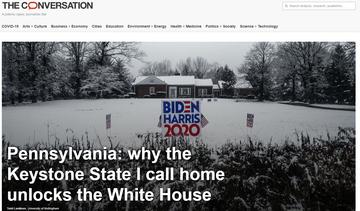
Who can get involved?
There are currently editions in the UK, US and Canada, Africa, Indonesia, Spain and France. Contributors must be employed by a university or research institutes – PhD (but not MSc) students can write providing it is under the supervision of a more senior academic.
How can I get involved?
Visit theconversation.com to sign up as a reader or register to become an author.
VALIDATE Outreach Week – 6-13 December 2020
In December 2020, VALIDATE will be celebrating all the amazing outreach efforts carried out across the globe by our members and providing tips and inspiration around how researchers can engage the public about your work and research. We hope that as many VALIDATE members as possible will get involved and undertake an outreach activity during the week - and let the VALIDATE Team know about it so that we can publicize your activities on our website and social media.
Do get in touch if you have any thoughts or ideas - validate@ndm.ox.ac.uk.
VALIDATE's BCG100 Programme in 2021
On 18 July 1921, at the Hôpital de la Charité in Paris, a newborn infant whose mother had died of tuberculosis a few hours after giving birth, received a dose of an experimental vaccine called Bacille Calmette-Guérin. This young child was the first human to receive the BCG vaccine, which, over the coming century, would be administered to billions of people across the planet-saving tens of millions of lives that would have been lost to one of history’s greatest killers - tuberculosis. Starting on World TB Day, 24 March 2020 VALIDATE's BCG 100 programme will consist of a series of events, a social media campaign and other activities in order to mark the centenary of the BCG. The campaign will aim to educate the public about vaccination and to promote the work VALIDATE researchers are doing to improve or replace on the lifesaving but flawed BCG Vaccine. The campaign will also look to provide resources to allow our researchers to undertake their own public engagement.
